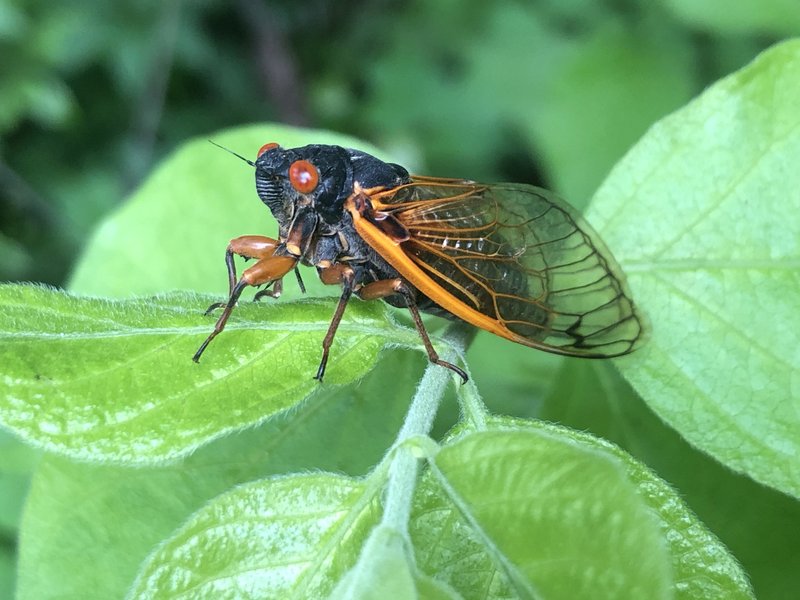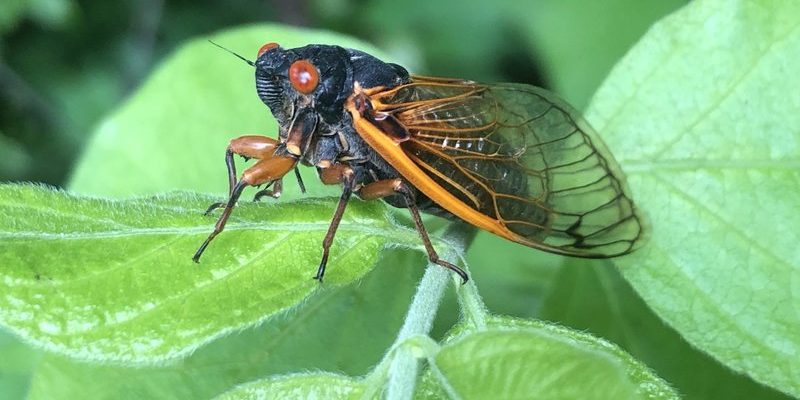
Imagine spending nearly your whole life hidden away in the dark, only to emerge for just a few weeks to mate and make some noise before returning to the underground. Sounds a bit like a plot from a movie, right? Well, that’s the life story of certain cicada species. The variety of cicadas ranges from those that have short life cycles of a few years to others that can spend up to 17 years underground. Let’s explore some of the most interesting facts about cicadas that might change the way you see these buzzing insects.
1. The Unique Life Cycle of Cicadas
The cicada life cycle is unlike that of many other insects. They undergo a process called *metamorphosis*, which includes several stages: egg, nymph, and adult. Female cicadas lay their eggs in tree branches. Once the eggs hatch, the nymphs fall to the ground and burrow underground, where they can live for years. Isn’t it wild to think that while we’re out enjoying summer, these little critters are underground, munching on plant roots?
Depending on the species, cicadas can be annual or periodical. Annual cicadas appear every year, while periodical cicadas (like the famous Brood X) only emerge after a long wait—17 years, to be exact! This long, hidden life helps protect them from predators. Just think about it: many creatures wouldn’t be around to feast on cicadas if they emerge only once every two decades.
2. Cicada Sounds: The Summer Symphony
Cicadas are known for their loud, buzzing calls, which are actually produced by a process called *stridulation*. Male cicadas have a specialized organ called a *tymbal* on their abdomen. When they contract and release muscles, these membranes vibrate, creating those distinct sounds. Each species has its own unique call, which helps females identify suitable mates. It’s like a musical audition happening right in your backyard!
You might be wondering why they make such a ruckus. The loud sounds serve a vital purpose: attracting females and marking territory. Some cicadas can reach sound levels of over 100 decibels, which is louder than a lawnmower! So the next time you hear that buzzing chorus, remember it’s a cicada symphony, trying to woo a mate or fend off rivals.
3. The Importance of Cicadas in Ecosystems
Cicadas might seem abundant and noisy, but they play a crucial role in their ecosystems. When they emerge from the ground, their exoskeletons are left behind, providing nutrients to the soil. This process enriches the earth, benefitting plants and other organisms. Additionally, cicadas serve as a food source for birds, mammals, and even other insects.
When thousands of cicadas emerge together, they create a feast for many species, helping to maintain the balance in local food chains. After they die, their bodies also decompose and enrich the soil, continuing their cycle of contribution to the environment. So, cicadas aren’t just summer noisemakers—they’re nature’s team players!
4. Cicadas’ Amazing Camouflage
Cicadas have an incredible ability to blend into their surroundings. Their exoskeletons often mimic the colors of tree bark or leaves, making them hard to spot. This camouflage helps them avoid predators. When they’re resting, they can be nearly invisible, blending in perfectly with their environment.
But it’s not just about hiding. Some cicadas also have fascinating markings and colors that signal their readiness to mate. Their ability to adapt and change shades to blend in is a cool example of nature’s ingenuity. So, if you’re out in the yard trying to spot one, you might want to bring your eyes in tune with nature to catch a glimpse!
5. Cicadas vs. Other Insects: What Sets Them Apart?
You might think cicadas are just like any other insect, but they have some unique features that set them apart. For example, their lifecycle is significantly longer than that of most insects like crickets or grasshoppers. While those bugs might develop in weeks or months, cicadas can spend years in their nymph stage.
Cicadas also belong to a distinct group called *Hemiptera*, or true bugs. Unlike many insects, they possess specialized mouthparts that allow them to feed on plant sap. Their feeding method helps to create a distinct sound, which can be quite different compared to the behaviors of other insects. This difference is what helps cicadas carve out their niche in the grand tapestry of nature.
6. The Cultural Significance of Cicadas
Cicadas have been celebrated in various cultures around the world. In many regions, they symbolize transformation and rebirth due to their unique life cycle. In ancient China, cicadas were often seen as a symbol of immortality, and they were even used in traditional medicine.
In the U.S., cicadas have a strong cultural association with summer. Their presence is a nostalgia trigger for many, evoking memories of carefree childhood days. You might find cicadas depicted in art, literature, and even music. Their buzzing sounds are often associated with the heartbeat of summer, creating a cultural tapestry that threads through our experiences.
7. Cicadas and Their Predators: The Struggle for Survival
Despite their size and sounds, cicadas have a variety of predators. Birds, spiders, and small mammals all enjoy feasting on these insects. To protect themselves, cicadas employ several strategies. Besides camouflage, they can also produce chemicals in their bodies that make them taste unpleasant.
Interestingly, this predator-prey relationship creates a fascinating dynamic in nature. For instance, when cicadas emerge in large numbers, it can overwhelm their predators, which is why they synchronize their life cycles. This strategy ensures that even if many are eaten, enough will survive to continue the species.
8. Cicadas Are Not Harmful to Humans
You might be concerned that cicadas are pests, but the good news is they are harmless to humans. Cicadas do not bite or sting, and they don’t pose a risk to pets either. While their loud calls can be a nuisance, especially during mating season, cicadas don’t damage plants like other insects do.
In fact, cicadas can be beneficial to gardens! They help aerate the soil as they dig and their waste products are nutrient-rich, which supports plant health. Understanding that cicadas are more of a benign presence can change how we view these fascinating insects.
9. Fascinating Molting Process of Cicadas
One of the most interesting aspects of a cicada’s life is its molting process. After spending years underground, the nymphs emerge from their burrows and climb trees to shed their old skin. This process is known as *ecdysis* and reveals their adult form. You can often find their old exoskeletons clinging to tree trunks, which looks like ghostly reminders of their past.
This transformation is not only impressive but also essential for their survival. The soft bodies of newly emerged cicadas take time to harden and develop their stunning colors. It’s like witnessing a creature come back to life, and it’s a crucial step in their brief life above ground.
10. The Variety of Cicadas: More Than Just the Noisy Ones
There are over 3,000 species of cicadas worldwide, and they come in various shapes, sizes, and colors. While many people are familiar with the loud green cicadas, there are also smaller, less noisy types that blend seamlessly into their environments. Some species have even adapted to urban settings, showcasing their resilience.
Their diversity is a reminder of nature’s complexity. Each species has unique adaptations that help them thrive in different environments, whether it’s the forests, fields, or even your backyard. Learning about these different cicadas can give you a greater appreciation for the biodiversity that exists all around us.
In conclusion, cicadas are much more than just the buzzing sound you hear during summer. They have a rich life history, play a vital role in ecosystems, and offer a glimpse into the wonders of nature. Next time you hear them buzzing away, take a moment to appreciate the incredible journey these little insects embark on every 17 years. With all their fascinating traits and behaviors, cicadas are truly one of nature’s most interesting creations.

